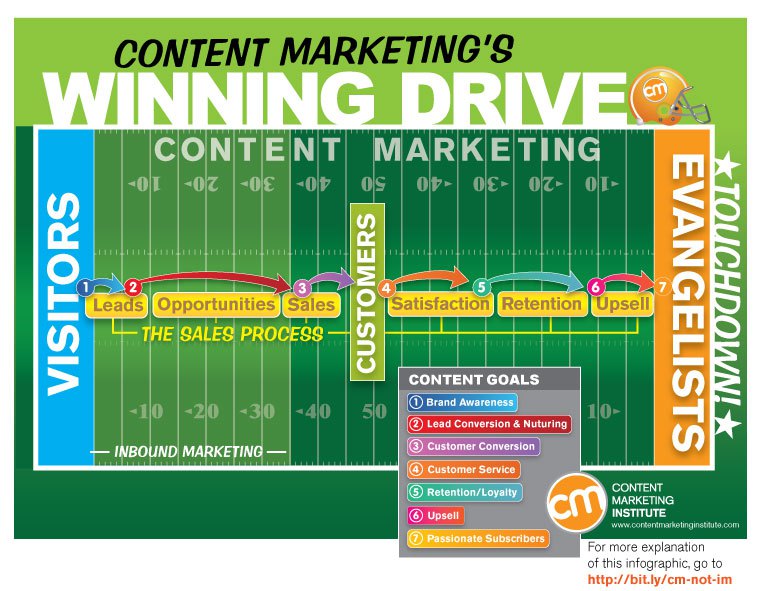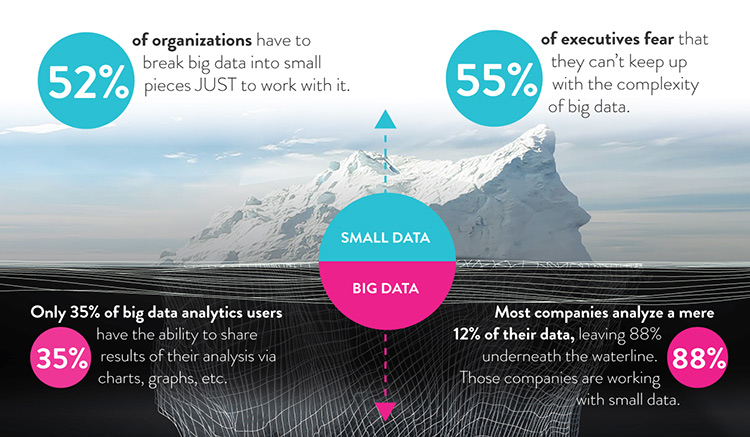Data is more than just facts and figures. Data analysis can improve your business’s bottom line. Your team members may deviate from the intended purpose, but you can veer them back on track with the numbers. Avoid company mishaps by driving your managers toward data-driven decisions.
1. For the Love of Tradition
Humans are creatures of habit. Mainly, we play nice and follow the trail of our predecessors. However, business leaders should not rely heavily on the past actions of their companies. By following tradition and not the data, you could be stifling your company’s growth.
Source: The 7 Business Goals of Content Marketing: Inbound Marketing Isn’t Enough
Don’t get trapped in the ol’ days. For example, advertisements might be the long-standing marketing strategy for your business. But based on research by Roper Public Affairs, 80 percent of business decision-makers prefer to receive company information in a series of articles versus an advertisement. Be ready to adjust your strategy to transform your visitors into evangelists.
Tips to Support Data-Driven Decisions
- Brainstorming encourages innovation. Let departmental teams participate in What If… exercises to buck old habits.
- Learn from companies outside your industry. Partner with a nonprofit; cross-sector collaboration can offer new insight for stubborn challenges.
- Build a “non-traditional” culture. Give employees perks for developing unconventional ideas.
2. Iceberg (Data), Right Ahead!
In business, we sometimes focus too much on the surface elements, such as SEO, social media, or paid advertising. More Facebook ‘likes’ are great, but what does that really mean for your company’s brand? Managers need to dig deeper to understand the entire data story. Find the underlying factors that are driving your business forward.
Source: Infographic: Big Data Iceberg
For instance, if the data shows a need to rev up content marketing, don’t automatically assume that means more blog posts. Demand Gen Report’s research study found that the top 3 content formats that B2B buyers seek out to research a purchase decision include: Whitepapers (78%), Case Studies (73%), and Webinars (67%). Adjust to the data by learning all the pieces of the puzzle.
Tips to Support Data-Driven Decisions
- Encourage employees to explain the data process. Knowing how they got from point A to point B gives you a complete journey to the final results.
- Ask several why and how questions to rebut any assumptions.
- Realize data doesn’t belong to IT. Involve all employees in the metrics of the company.
3. Cooking the Data
Data should help you make a decision, not necessarily support a ready-made plan. Good managers can make bad judgment calls by offering data only to justify their decisions. This same issue became prevalent at one of the big tech companies—Microsoft. Executives hired researchers to lend credibility to the their decisions.
So, your team may be headstrong on selecting website color schemes. Redirect their attention to the 2014 Mobile Behavior Report: 54% of consumers believe that it is easier to find information on mobile-optimized sites. Furthermore, give your team projected outcomes of how this data offers value to the company.
Tips to Support Data-Driven Decisions
- Separate the research from the decision makers. Hire an external firm to provide your data analysis. Then, let an internal committee offer the results to the decision makers.
- Host a professional development seminar showing the dangers of cooked data.
4. A Little Bit Biased
Every business leader shows an inclination towards a particular outcome or idea. Cognitive bias can emerge when we make decisions based on limited information or apply non-relevant facts to a particular situation. One major example is groupthink—the desire for everyone to conform. Without any naysayers, your business could become stagnant.
Throw out the bias; instead, use the data as your competitive advantage. According to HubSpot, tweets posted around 4 p.m. Eastern time tend to get more retweets than those posted at other times. So, why would your social media team agree to post tweets at noon or midnight? Correct this bias with the data.
Tips to Support Data-Driven Decisions
- Audit everyone’s thinking with self-awareness drills.
- Play devil’s advocate. Conflicting information can challenge current beliefs and produce a better outcome.
Data can help your business if used correctly. Don’t let your company get bogged down with these common errors. From lackluster traditions to cooked data, you can guide your employees towards making sound, data-driven decisions—without the stubborn traction of a few. Refocus your team and benefit from the results.
About the Author: Shayla Price lives at the intersection of digital marketing, the law, and social responsibility. She inspires a new breed of innovative attorneys at Hearsay Marketing. Connect with her on Twitter: @shaylaprice.


No comments:
Post a Comment